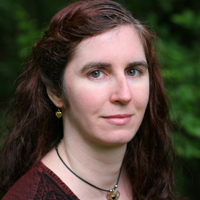Halo - Ghosts of Onyx

The 4th book related to Bungie's "Halo" series of video games, "Halo: Ghosts of Onyx" by Eric Nylund gives side information and background about the Halo universe besides that shown in the games.
The story takes place at various times as compared to the timeline of the games - beginning after the original Halo, but later marked by the events of Halo 2 and foreshadowing those of Halo 3. Much of the setting will, of course, be familiar to fans of the games, but in detail most of the story is actually connected more to the preceding books than to the games. The main characters of the story include the other surviving super-soldiers of the SPARTAN-II project - the main one being, of course, the Master Chief - as they attempt to survive in dangerous, alien-held worlds. Many of the other Spartans introduced in earlier books like "Fall of Reach" and "First Strike" are brought in again, including Kelly, Linda, and Fred. John, the Master Chief, is absent for most of the story.
Also introduced are the Spartan-IIIs, the lower-cost, expendable replacements for the Spartan-IIs. The story deals with the survivors of the traumatic "suicide squad" used for dangerous operations of the highest order. Furthermore, one of the Spartan-IIs, Kurt, has transitioned from being a field operative to being the leader and mentor for the new breed of Spartan. Several other characters make returns as well - the Spartans' drill sergeant, Chief Mendez, and the mastermind behind the Spartan-II project, Dr. Halsey. The characters are consistent and identifiable, and despite the only difference between Spartans being their name and number, their personalities are developed enough to make each one fairly unique.
As far as storyline goes, the book seems to be mostly disconnected from the games and more connected to Nylund's other Halo books than anything else. With the ousting of the Master Chief from the plot, the cast is comprised entirely of Nylund's established characters. While this is, of course, expected from a side-story novel like this, it also disconnects it from the established Halo universe. While there are plenty of references to the events of the games in the form of the Spartans, the Forerunners, and the Covenant, most of them just seem like "proper nouns" instead of actual elements from the Halo universe. Apart from names and specific words, the story could just as easily be from any other sci-fi setting, and more things are introduced than are used from older media. I often found myself forgetting, at points, that this was supposed to be a Halo novel. This is compounded somewhat by the occasional errors that Nylund makes regarding equipment, such as saying the Pelican dropship has two chainguns (originally, it had zero, which was changed in Halo 2 to be one concealable chin-gun to explain their presence in "The Fall of Reach"). While these errors are for the most part minute and only detectable by hardcore fans of the series, they do serve to distance Nylund's works in particular from the series as a whole.
As a whole, though, I did enjoy the book; there were many sub-chapters of the Halo universe that were filled in by events in the book. Mostly, though, the book avoided the events of the games and decided to stay with its own string of events and characters. Therefore, I would recommend the book series to people who enjoyed the game, but I would recommend this particular book only to people who have read the books that come before it.
The story takes place at various times as compared to the timeline of the games - beginning after the original Halo, but later marked by the events of Halo 2 and foreshadowing those of Halo 3. Much of the setting will, of course, be familiar to fans of the games, but in detail most of the story is actually connected more to the preceding books than to the games. The main characters of the story include the other surviving super-soldiers of the SPARTAN-II project - the main one being, of course, the Master Chief - as they attempt to survive in dangerous, alien-held worlds. Many of the other Spartans introduced in earlier books like "Fall of Reach" and "First Strike" are brought in again, including Kelly, Linda, and Fred. John, the Master Chief, is absent for most of the story.
Also introduced are the Spartan-IIIs, the lower-cost, expendable replacements for the Spartan-IIs. The story deals with the survivors of the traumatic "suicide squad" used for dangerous operations of the highest order. Furthermore, one of the Spartan-IIs, Kurt, has transitioned from being a field operative to being the leader and mentor for the new breed of Spartan. Several other characters make returns as well - the Spartans' drill sergeant, Chief Mendez, and the mastermind behind the Spartan-II project, Dr. Halsey. The characters are consistent and identifiable, and despite the only difference between Spartans being their name and number, their personalities are developed enough to make each one fairly unique.
As far as storyline goes, the book seems to be mostly disconnected from the games and more connected to Nylund's other Halo books than anything else. With the ousting of the Master Chief from the plot, the cast is comprised entirely of Nylund's established characters. While this is, of course, expected from a side-story novel like this, it also disconnects it from the established Halo universe. While there are plenty of references to the events of the games in the form of the Spartans, the Forerunners, and the Covenant, most of them just seem like "proper nouns" instead of actual elements from the Halo universe. Apart from names and specific words, the story could just as easily be from any other sci-fi setting, and more things are introduced than are used from older media. I often found myself forgetting, at points, that this was supposed to be a Halo novel. This is compounded somewhat by the occasional errors that Nylund makes regarding equipment, such as saying the Pelican dropship has two chainguns (originally, it had zero, which was changed in Halo 2 to be one concealable chin-gun to explain their presence in "The Fall of Reach"). While these errors are for the most part minute and only detectable by hardcore fans of the series, they do serve to distance Nylund's works in particular from the series as a whole.
As a whole, though, I did enjoy the book; there were many sub-chapters of the Halo universe that were filled in by events in the book. Mostly, though, the book avoided the events of the games and decided to stay with its own string of events and characters. Therefore, I would recommend the book series to people who enjoyed the game, but I would recommend this particular book only to people who have read the books that come before it.

Related Articles
Editor's Picks Articles
Top Ten Articles
Previous Features
Site Map
Follow @lisavideogames
Tweet
Content copyright © 2023 by James Shea. All rights reserved.
This content was written by James Shea. If you wish to use this content in any manner, you need written permission. Contact Lisa Shea for details.



